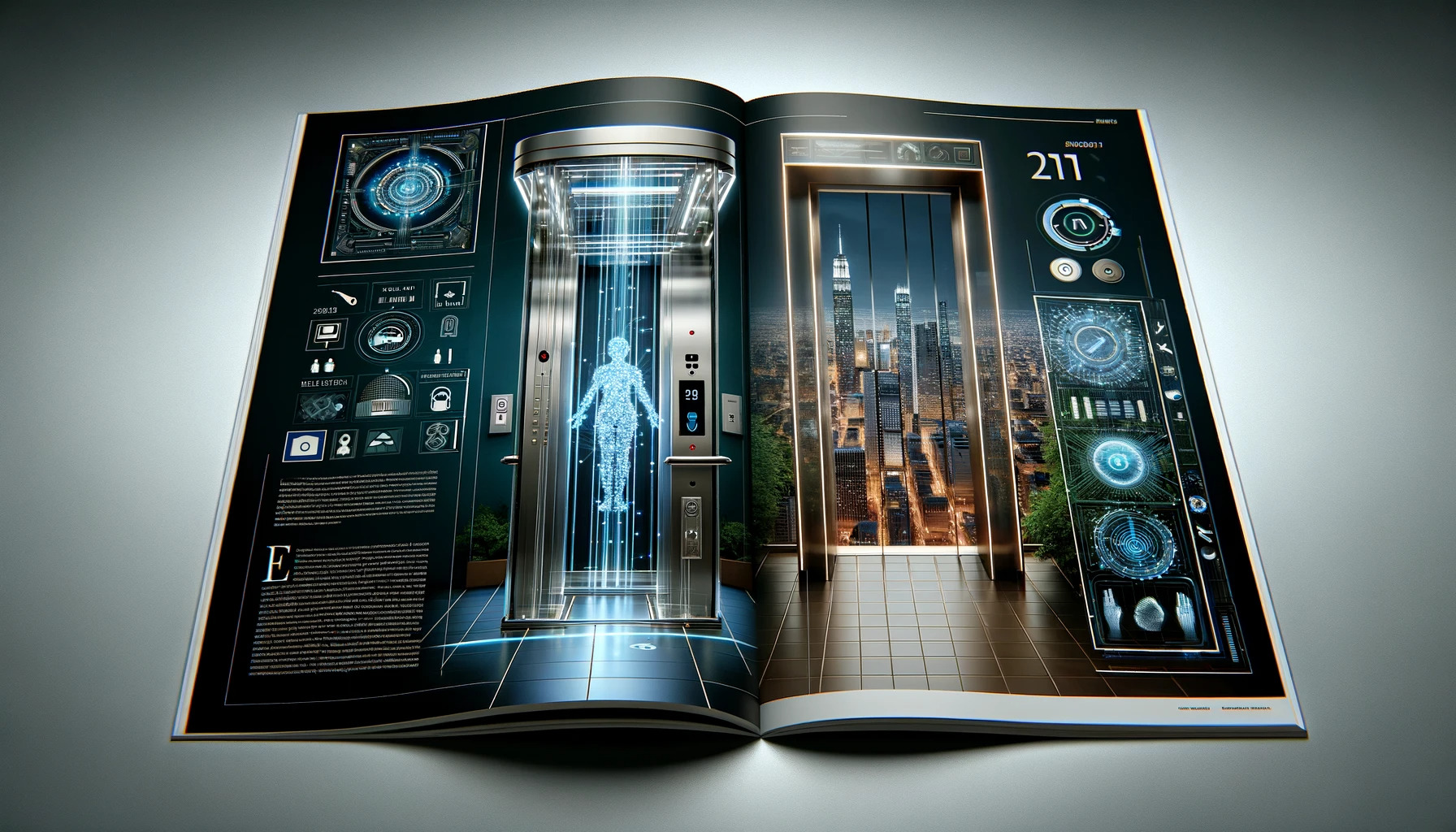Elevator Technology Trends: What to Expect in 2024
Happy New Year! As we usher in 2024, let’s take an exciting ride into the future of elevator technology. “Smart elevators” with AI and voice recognition are getting smarter. Some models use facial recognition to identify you and take you to your floor without pressing buttons. Biometric scanning like fingerprints or retinal scans can also verify identities and control access.
Intelligent Elevators
The future is here with “smart elevators” powered by artificial intelligence and machine learning. They’re also equipped to understand and act on voice instructions, making travel more efficient and user-friendly. Some models use facial recognition to identify frequent occupants and automatically deliver them to their usual floors without pressing buttons. The integration of IoT connectivity enables real-time monitoring of equipment performance, too.
Biometric Access Control
Elevator security is becoming more seamless with biometric access systems. Options like fingerprint, retinal, or facial scanning can all serve to verify identities and limit elevator access to authorized individuals. This provides layered protection beyond traditional keys and access cards. For office buildings and residential complexes, biometrics are a convenient way to enhance safety and restrict elevator usage only to approved occupants or staff. Touchless technologies have become especially popular after the pandemic too.
Predictive Maintenance
Machine learning paired with IoT connected sensors allows elevators to notify technicians of potential issues before they occur. By continuously monitoring equipment performance and benchmarking against expected baselines, AI algorithms can detect abnormalities and schedule preemptive repairs. This predictive maintenance can minimize elevator downtime and optimize longevity. Machine learning will enable even more preventative oversight in 2024.
Sustainable Design
Eco-consciousness is rising across the industry. Hydraulic elevators are shifting to plant-based oils. Energy regeneration systems harness power from descending loaded cars to feed back into buildings. LED lighting, auto standby modes, and advanced motors reduce energy waste. Solar panels and wind turbines can even allow elevators to partially power themselves. Green design strives to cut the ecological footprints of elevators through renewable energy and optimized efficiency.
Enhanced Accessibility
Increased urbanization further emphasizes the need for accessibility. Voice-activated controls, tactile buttons, and audible announcements accommodate those with vision or hearing impairment. Adjustable door opening times give elderly passengers extra time. Child sensors prompt doors to reopen if obstructed. With populations aging, ensuring equal access for all users will be a key focus moving ahead.
At the forefront of these trends is AuditMate – a specialized firm offering elevator auditing and modernization as a SaaS solution. Their comprehensive services, from inspection to maintenance, help maximize elevator safety and reliability. AuditMate’s commitment to excellence and safety exemplifies the industry’s push to elevate quality of life through technological innovation. As cities grow upwards, elevators look set to scale new heights in sustainability, intelligence and accessibility this year.

Frequently Asked Questions | AuditMate
FAQs
What are the main benefits of preventive elevator maintenance?
The key benefits are maximized lifespan, optimized performance, enhanced safety, improved accessibility, lower lifecycle costs, and regulatory compliance. Routine maintenance enhances all these aspects.
How often should elevator maintenance be performed?
Maintenance frequency depends on equipment age and use levels, but elevators should be serviced every 1-3 months to replace worn parts, lubricate, calibrate sensors, test functionality, and identify any emerging issues before they worsen.
What happens if I skip or delay preventive maintenance?
Lacking maintenance causes accelerated wear along with sudden cable, motor, brake, door and other failures. This leads to injuries, operational disruptions, regulatory fines, and exponentially inflated repair/replacement costs over the elevator’s lifespan.
What are some software tools to help manage elevator maintenance?
Solutions like AuditMate centralize real-time equipment data to track maintenance records, schedule upcoming servicing, automate reminders, provide cost analytics, and simplify regulatory reporting for elevator portfolios. This optimizes oversight.
How can consistent maintenance improve passenger safety?
Routine multi-point inspections and part replacements minimize hazards like fraying cables, uneven leveling, shaky rails, faulty doors/sensors, uncontrolled descents due to handbrake failures, and tripping due to damaged car conditions. Proper care is essential.

